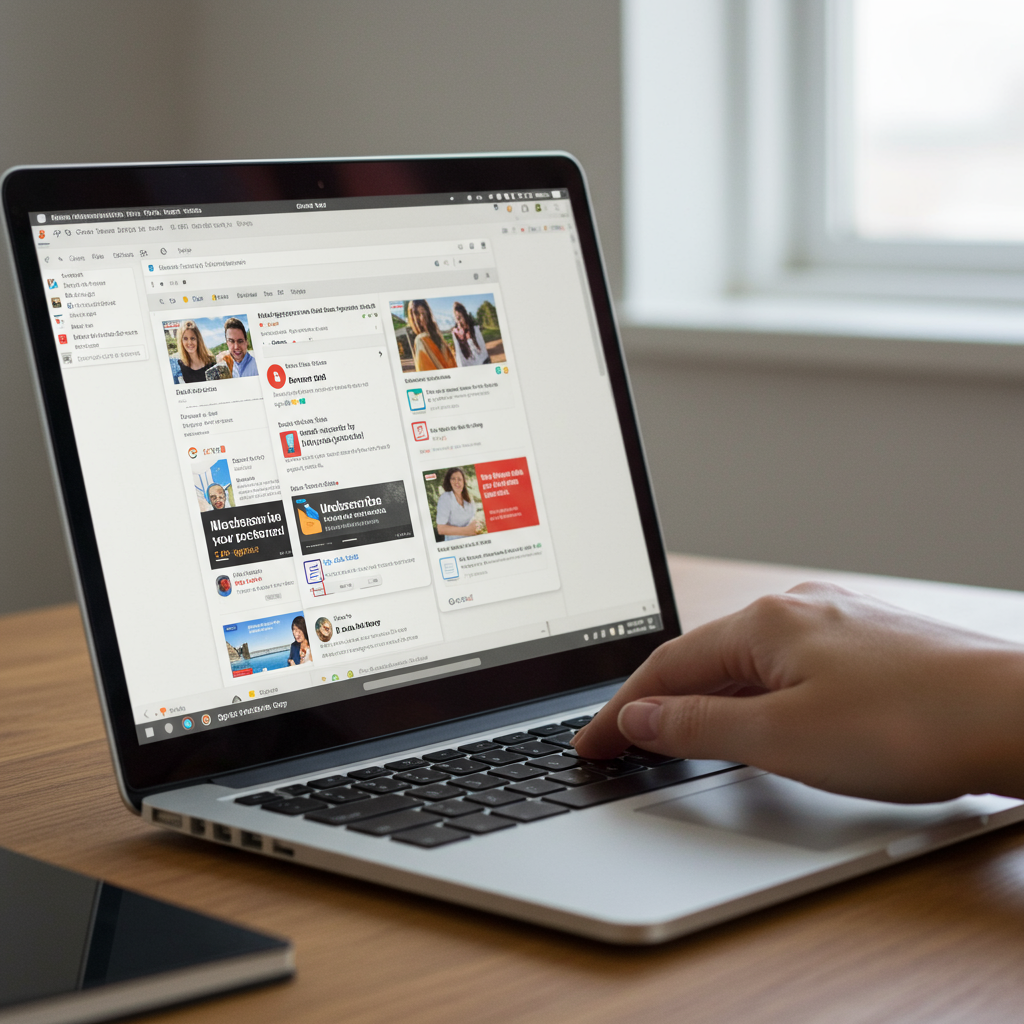<a href="https://news.quantosei.com/2025/07/03/ai-videos-of-black-women-depicted-as-bigfoot-are-going-viral/” title=”Viral & Racist AI Videos Depict Black Women as Bigfoot”>tiktok is facing a concerning surge in racist and discriminatory videos. These harmful clips, increasingly generated using artificial intelligence, have flooded the platform in recent weeks. An investigative report suggests many were created with Google’s new Veo 3 platform. This development raises serious questions about the effectiveness of content moderation policies on both creation and distribution platforms amidst the growing misuse of powerful AI tools.
AI-Generated Hate Content Spreads Rapidly
A recent report by Media Matters for America (MMFA) highlighted a disturbing trend. In just the past few weeks, a significant volume of AI-generated racist videos has appeared on TikTok. These posts are specifically designed to promote hate and amusement targeting certain skin colors, ethnicities, and cultural groups.
The scale of the problem is substantial. These AI-fueled hate videos are gaining significant traction, already accumulating millions of views and high engagement rates across the platform. This rapid spread demonstrates the virality potential of harmful content when amplified by AI generation.
The Nature of the Harmful Content
The racist videos identified in the report are deeply offensive and varied in their targeting. A large portion specifically attacks Black individuals. Content includes dehumanizing depictions, such as showing Black people as monkeys. It also leverages tired, harmful tropes, like associating Black people with fried chicken and watermelon.
Beyond anti-Black racism, the AI-generated content extends to other forms of hate. Examples include antisemitic imagery and misleading or harmful portrayals of immigrants and protesters. Some particularly disturbing clips depict violence against protesters, including scenarios of them being run over by cars, or show imagery reminiscent of concentration camps.
Google’s Veo 3 Linked to Racist Content
The Media Matters report points to Google’s Veo 3 platform as a major source of these offensive videos. Launched in May, Veo 3 is a high-quality AI video generator. The report noted that many of the hateful videos circulating on TikTok bore the distinctive “Veo” watermark. This mark strongly indicates they were generated using Google’s tool.
All the harmful videos reviewed showed clear signs of AI generation. This confirms that individuals are actively using these advanced technologies to create and disseminate hate speech at scale. The ease with which such content appears to be generated via platforms like Veo 3 poses a significant challenge.
Policy Failures on Multiple Platforms
The proliferation of these racist videos highlights failures in content moderation across multiple platforms. Google’s Veo 3, like other Google services, has a prohibited use policy. This policy explicitly bans the promotion of hate speech, harassment, and abuse. Similarly, TikTok has clear community guidelines against hate speech and harmful content targeting protected groups.
Despite these stated restrictions, the AI-generated hate videos are making their way onto TikTok and gaining massive viewership. While TikTok claims to use both technology and human review, the volume of uploads makes timely detection difficult. A TikTok spokesperson mentioned that many accounts identified by MMFA were eventually banned, but often only after the content had already circulated widely. Google’s AI model itself also appears to have insufficient safeguards, or its guardrails are easily bypassed by malicious users. Experts suggest that prompt vagueness or the AI’s difficulty grasping subtle racist tropes might contribute to this failure.
The Broader Issue of AI Misuse and Online Hate
The rise of sophisticated AI tools presents a dual challenge. While offering powerful capabilities, they also provide new avenues for misuse. Individuals intent on spreading online hate are quickly adopting AI video generators. They are essentially using machine learning to “supercharge” their propaganda and campaigns for sowing chaos.
This trend is not isolated. The past year has seen a significant spike in deepfake content following the release of more AI video tools. This includes non-consensual fake pornography and deceptive videos designed to frame individuals. A notable case involved a Maryland principal falsely depicted as racist in an AI deepfake, causing significant public outcry and scrutiny.
Lawmakers and regulators are increasingly concerned about the potential for AI misuse. There is growing pressure on AI companies and developers to implement more robust content filters and restrictions. Legislators are also exploring new laws specifically aimed at protecting the public from harmful AI-generated content. However, the situation with Veo 3 and TikTok demonstrates that current measures are insufficient. Even extensive guardrails may struggle against determined actors exploiting generative AI’s capabilities for malicious purposes.
Frequently Asked Questions
What specific types of racist content were found circulating on TikTok via Google Veo 3?
The report by Media Matters for America documented several types of deeply offensive AI-generated content. A significant amount targeted Black people with harmful stereotypes, including depictions as monkeys or relying on tropes like affinity for fried chicken and watermelon. The content also included antisemitic material, misleading portrayals of immigrants and protesters, and disturbing violent scenarios like protesters being run over by cars.
Who published the report identifying Google Veo 3 as a source of racist videos on TikTok?
The investigative report that brought attention to the issue of racist AI videos, particularly those linked to Google’s Veo 3 and their spread on TikTok, was published by the organization Media Matters for America (MMFA). This report analyzed the proliferation of such content and highlighted the presence of the “Veo” watermark on many of the harmful videos.
How are TikTok and Google addressing the issue of racist AI-generated content appearing on their platforms?
Both TikTok and Google have official policies prohibiting hate speech and harmful content. TikTok states it uses technological tools and human moderators to enforce its community guidelines. Google’s Veo 3 also falls under policies against promoting hate speech. However, the report indicates these policies are currently insufficient, as racist videos created with Veo 3 are still circulating widely on TikTok. While platforms take down content when flagged, enforcement gaps allow the material to gain millions of views before removal. Lawmakers are also pushing for stronger preventative measures from AI developers.




